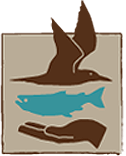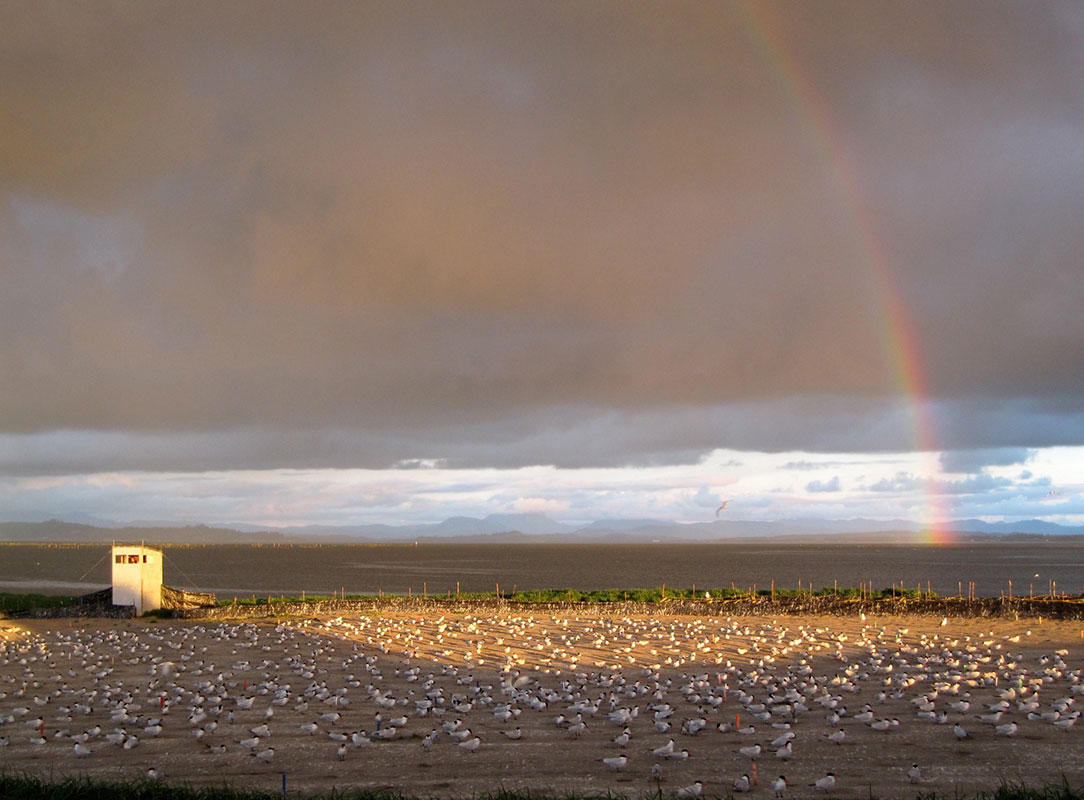 When Eagles Attack
When Eagles Attack
A tornado of birds. In an instant the sky is a roiling mass of feathery white bodies, flying chaotically in all directions, up and away from the nests they had been occupying moments before. There is a cacophonous burst of noise, and then this fades out as the birds rise and circle the empty colony; or, almost empty colony. Because now, on the 2 acres occupied for months by the largest breeding colony of Caspian terns in the world, there stands a solitary bald eagle, ravenously tearing at the prey gripped tight in its talons: an adult Caspian tern that it plucked from the air in the midst of the flush. For 15 minutes the adult bald eagle dismantles the tern, feathers flying and delicate hollow bones crunching in its beak, pausing only to twist its head in all directions, stealing furtive glances at the terns wheeling in the sky above it. And then, as quickly as it appeared, the eagle departs, leaving a head, pieces of wings and a ring of plucked feathers as the only sign of the dramatic scene of predation that has just unfolded. As its massive wings beat the air and carry it over the channel and towards the mainland, it is replaced by hundreds of western and glaucous-winged gulls, systematically emptying the tern nests of their eggs while thousands of Caspian terns circle the colony, crying out, swooping down, and eventually dispersing until the world’s largest Caspian tern colony sits silent and still.
On May 20, the Caspian tern colony on East Sand Island, Oregon began experiencing consistent disturbances at sunset, in which the entire colony would suddenly abandon their nests and circle the colony, hesitant to re-land, and eventually abandon the colony all together, returning in the early morning hours. The timing of these events suggested that a mammalian predator was responsible, or possibly the resident peregrine falcon. However, on May 23, from our vigil in the observation blinds that ring the tern colony, the crew working on East Sand Island was shocked to witness an adult bald eagle fly through the colony, grab a Caspian tern and proceed to devour it on colony. The eagle quickly stripped the bird of feathers, cleaned it of meat and then crunched through its breast bone to devour the organs. This process was fast and efficient, taking no more than 15 minutes, after which the eagle left the colony. The terns remained in the air over the colony throughout, moving together in a group that resembled schooling fish, making a circuit over the entire east end of the island, but never re-landing on the colony itself. The gulls, however, showed no hesitation to land on the colony once the eagle was gone, their ranks swelling from an initial handful to hundreds, sweeping over the colony to pluck tern eggs from the unattended nests. They gorged themselves until well after midnight, when the terns finally began to return.
 |
This pattern continued for the next 9 days; each day the number of active nests was reduced and confined to a rapidly shrinking area in the center of the colony. The eagle was not always successful in its attempts at securing a meal, but the gulls always were. As fewer terns had nests to attend to, the flushes happened more frequently and the gulls were always ready to pick up where they had left off, doing a remarkable job of pinpointing the areas where tern eggs remained. Two tern eggs actually hatched during this 9-day period, but the resultant nestlings were soon devoured by gulls.
 |
- Stefanie Collar (OSU)
(To see video, click here)



